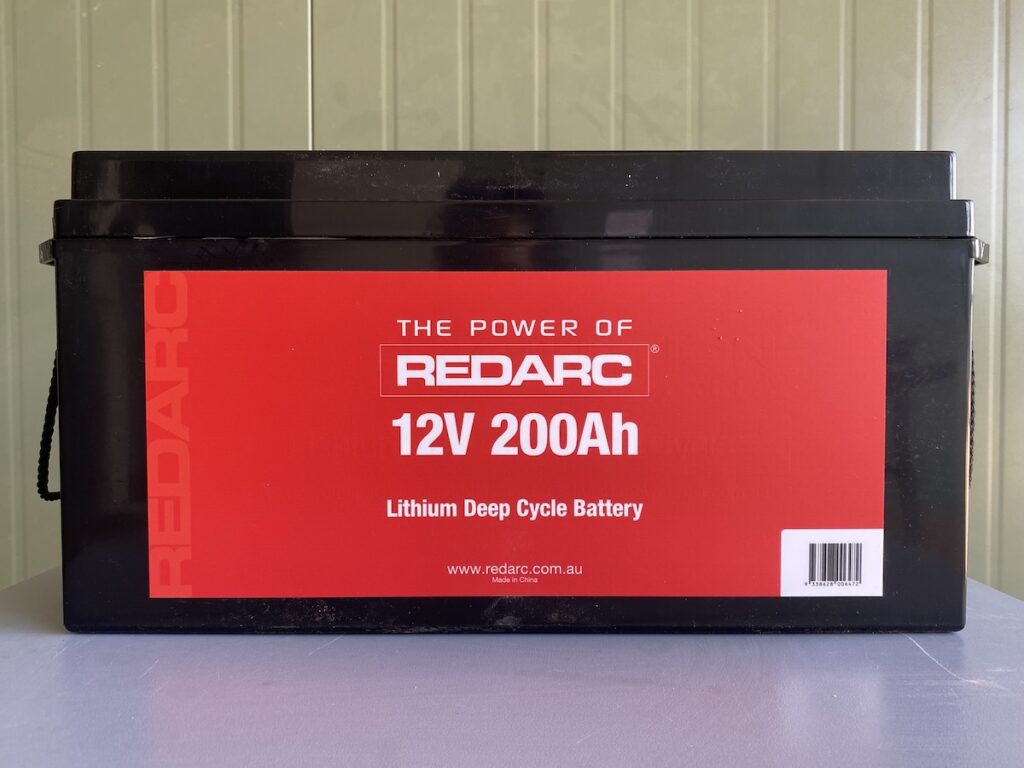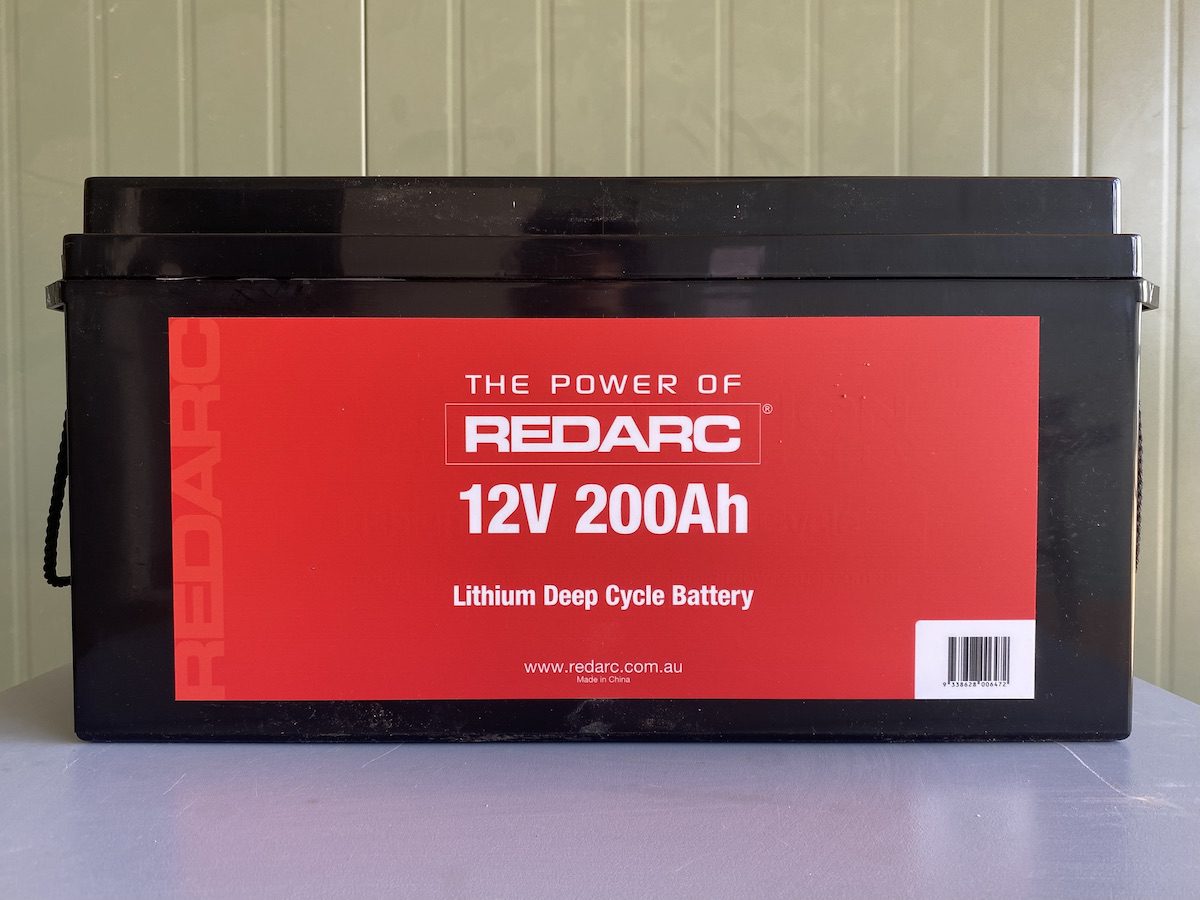If you’re looking to go off-grid in your 4WD, camper, RV, caravan or boat… then a 200Ah Lithium battery is a great starting point.
We recently upgraded our Wedgetail Camper with a new 200Ah REDARC lithium battery. Let’s take a look at why we chose this particular battery.
REDARC Electronics, Australian Quality
Before we go on, a full disclosure. We have a long relationship with REDARC Electronics. They gave us this 200Ah lithium battery for a long-term test. They occasionally give us new products from time to time, which we then test over the long term.
We pride ourselves on honest reviews, regardless of whether we have bought the product at full retail price or been given the product to test. This lithium battery review is no different.
Reviews like the one you’re reading now are ideal for understanding more about a product. But the real test comes with time. We’ve always believed in the “buy once, buy quality” way of thinking.
We’ve tested many of REDARC’s products over the long term and have found them to be quality products. They stand the test of time.
Hopefully our 200Ah lithium battery will be the same.
REDARC Electronics make a range of products in-house in their Adelaide factory. Other products are made overseas to REDARC’s specifications. But regardless of where they’re manufactured, REDARC demand a high level of quality and reliability.
Now, let’s take a closer look at REDARC’s new 200Ah lithium battery.

A 200Ah Lithium Battery With A Real-Life Rating To Match
Unlike many cheaper lithium batteries on the market, the 200Ah rating means you’ll have the full 200Ah available. It’s a nominal rating, meaning the battery capacity is actually over 200Ah.
A lithium battery has an internal battery management system (BMS). The BMS is the brains of the battery.
A typical lithium battery is made up of a set of cells. The BMS maintains them at optimal charge, to ensure reliability and longevity.
Another job of the BMS is to protect the cells from over-discharging. Lithium batteries can be discharged down to 20%. Below 80% DOD (depth of discharge), the internal BMS will cut off output power to the terminals to protect the cells.
How well a BMS performs its duties boils down to one factor – quality. Is it well-built or cheap and nasty? In fact, the quality of:
- the individual cells,
- the BMS,
- the internal cabling,
- what the housing’s made of and how well it protects internal components
…these are all factors which directly affect how well a lithium battery performs.
And they’re all factors which mark the difference between cheap and more expensive lithium batteries. You get what you pay for.
Many cheaper lithium batteries list a rating of 200Ah, but this is their total capacity. So you only have a maximum of 160Ah available.
A REDARC lithium battery’s actual total capacity is well over 200Ah, meaning you have the full 200Ah available.
The Vital Statistics
You can find all the specifications on REDARC’s 200Ah lithium battery here, plus the other lithium batteries in their range.
Outback Equipment stock REDARC Lithium Batteries. Go here for details.
We’ll highlight a few important specs below, so you can compare them with similar products on the market.
What you’ll notice is REDARC typically go with conservative figures. An example is the maximum inverter size.
Maximum Inverter Size
You’ll see many companies advertising their 200Ah lithium batteries as being able to cope with up to 2,000W inverters. However, REDARC specify a maximum of 1,000W (per 200Ah battery).
Why the difference? In the end, it comes down to battery life. If you’re running a large inverter, it’s a big drain on any battery. You have big currents flowing out and big currents flowing in to keep the battery topped up.
Inevitably, you’ll shorten the battery life.
Battery Life
The number of discharge cycles down to a given DOD is a common specification listing for batteries. It gives you an indication of how long a battery might last. Here are the specs for the REDARC 200Ah battery:
- 2,000 life cycles down to 80% DOD
- 5,000 life cycles down to 50% DOD
- 8,000 life cycles down to 20% DOD
What’s appropriate for your needs? It depends on how you use the battery.
For example, our battery rarely drops below 80% charge. Assuming we use it every day (since we’re travelling full time), that’s around (8,000/365 =) 22 years!
But if we were running it hard every day (a large inverter and a stack of other power demands), then we’d expect closer to (2,000/365 =) 5 years.
Charging and Discharging
This is where you’ll find some fanciful claims from a few of the cheaper brands. Some of them quote unrealistically high charge and discharge currents.
High currents generate heat. Heat is the enemy of any battery, it eventually damages components.
The higher the charge/discharge current, the more heat you’ll generate.
Other times, manufacturers of cheaper batteries will go the other way. They have ridiculously small discharge and charging currents. Why? Most likely because the internal components are under-sized.
This means you nullify the benefits of a high capacity lithium battery… large storage capacity and fast charging.
Once again, REDARC have gone down the conservative path – some might say the realistic path, when specifying charge and discharge rates.
Discharge Rates:
- 100A recommended continuous discharge (120 minutes)
- 170A maximum discharge (60 minutes)
- 400A peak discharge (5 seconds)
Charge Rates:
- ≤50A recommended charge current
- 100A maximum charge current
Initial Results
So how’s our new 200Ah lithium battery going so far?
Well, we haven’t used it a great deal yet for various reasons. But it did get a good work-out recently. We had to go home for a couple of days… which turned into two weeks, due to unrelenting heavy rain.
In that time, we left our 85 litre Evakool fridge running in the Wedgetail Camper. After all, we were only planning to be home for 2 days! The fridge was empty, which is the least efficient way you can run a fridge.
That rain! It was unrelenting, meaning thick cloud and no sun at all. The solar panel on top of our Wedgetail Camper wasn’t able to add charge to the new 200Ah battery for eight days. That’s never happened to us before.
By the end of Day 8, the battery level was 30%. That’s less than 9% per day, with a large empty fridge running continuously… and effectively zero charging.
So while it’s not a definitive trial, it did show we’ll have no issues camping off-grid for extended time periods.
And like the 100Ah lithium battery before it, this new 200Ah lithium battery charges incredibly quickly. It’s difficult to convey how important this is when you’re off-grid. You really do want to capture every bit of sun you possibly can and pump it onto the battery. And quality lithium batteries let you do this.
So far, so good. We’ll do longer term reviews on the REDARC 200Ah lithium battery from time to time.
All indications are pointing to this battery exceeding our expectations.
P.S. Click here for great deals on REDARC Lithium batteries from Outback Equipment.
Looking for more reviews on 4×4 Accessories? Then go here for more.

Free Download:
The 8 Essentials You Need To Live Off-Grid
…and don’t worry, eating raw fish isn’t one of them!
Any questions or comments? Go to the Comments below or join us on Pinterest, Facebook or YouTube.
Any errors or omissions are mine alone.

